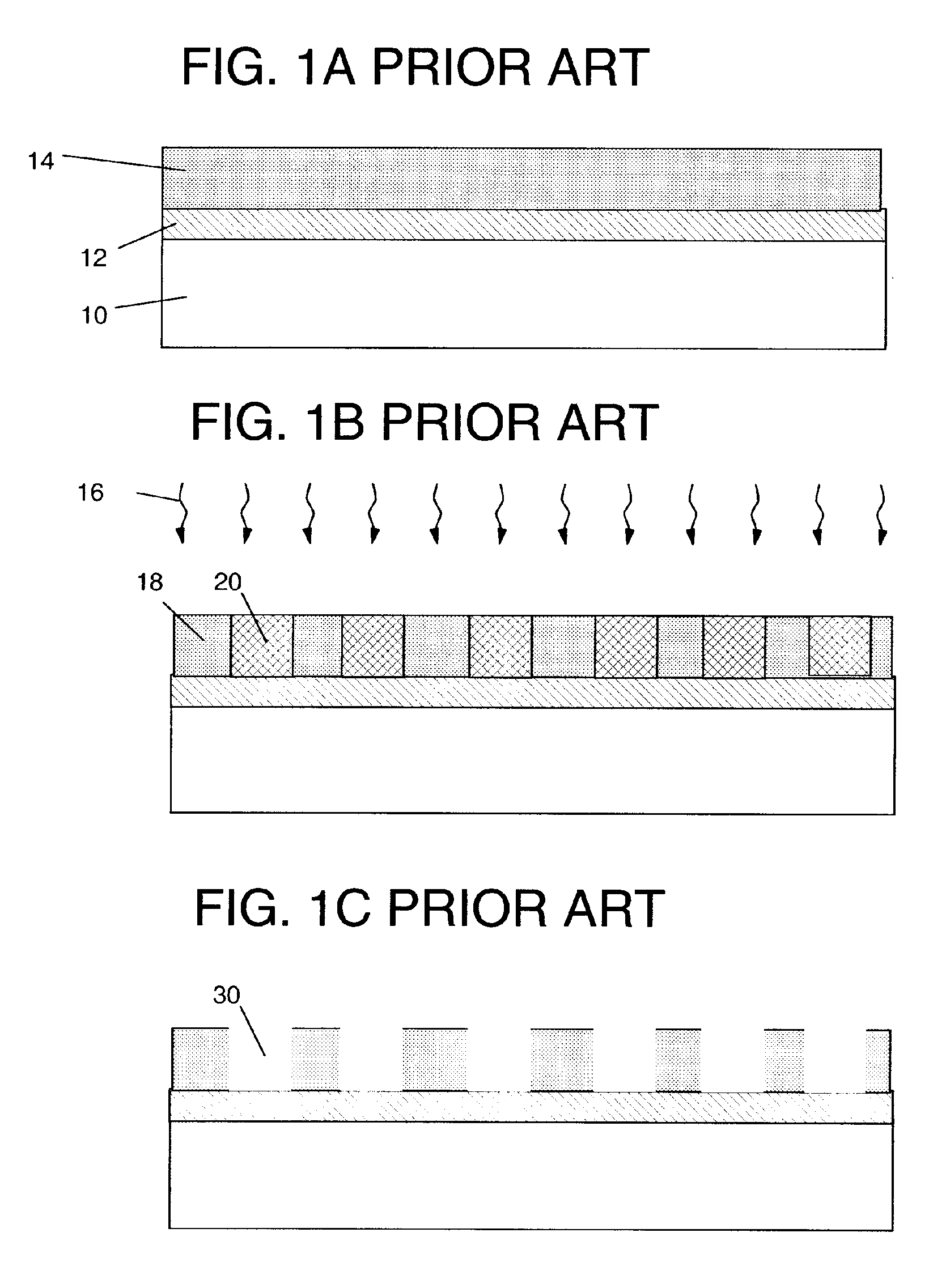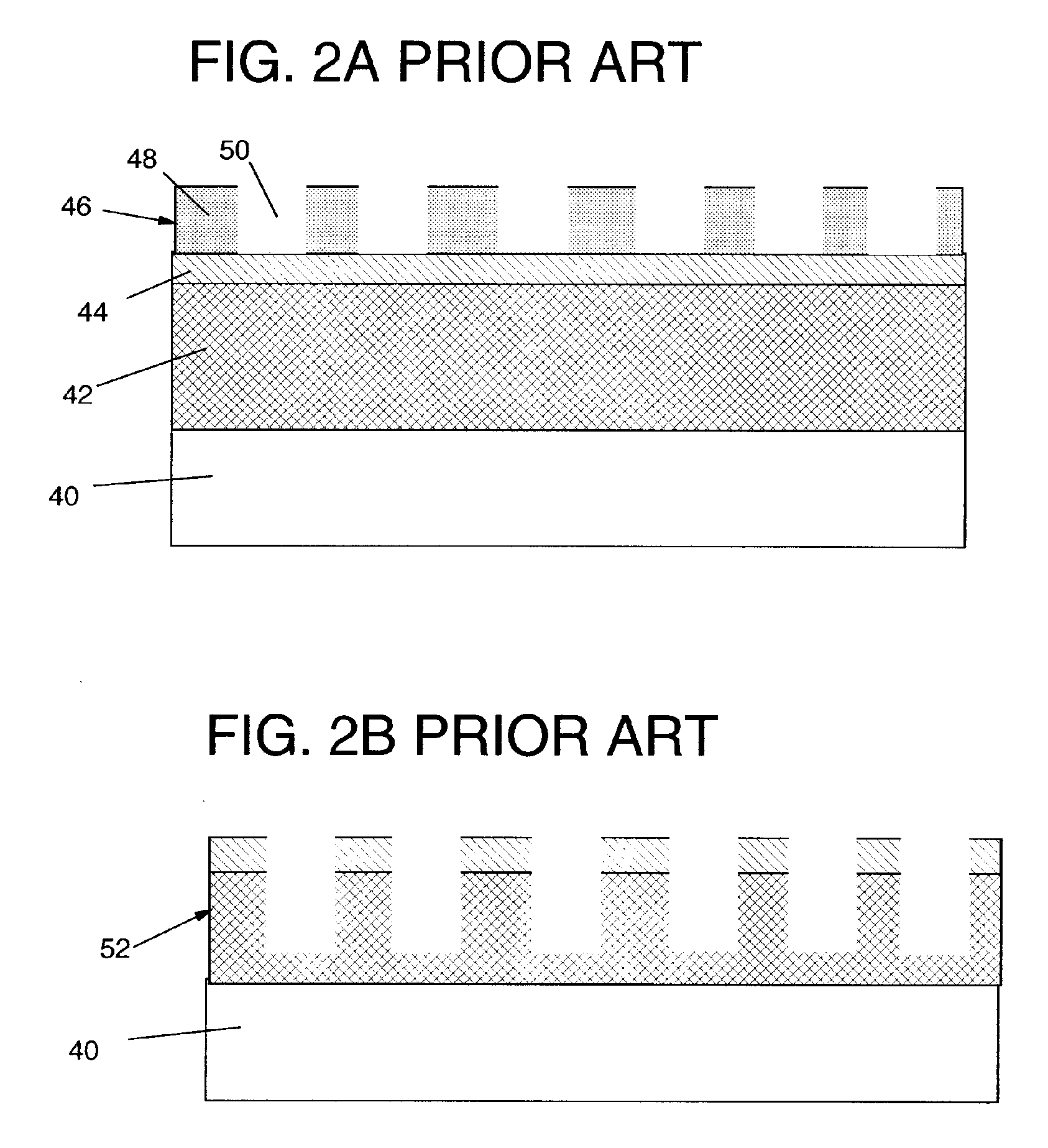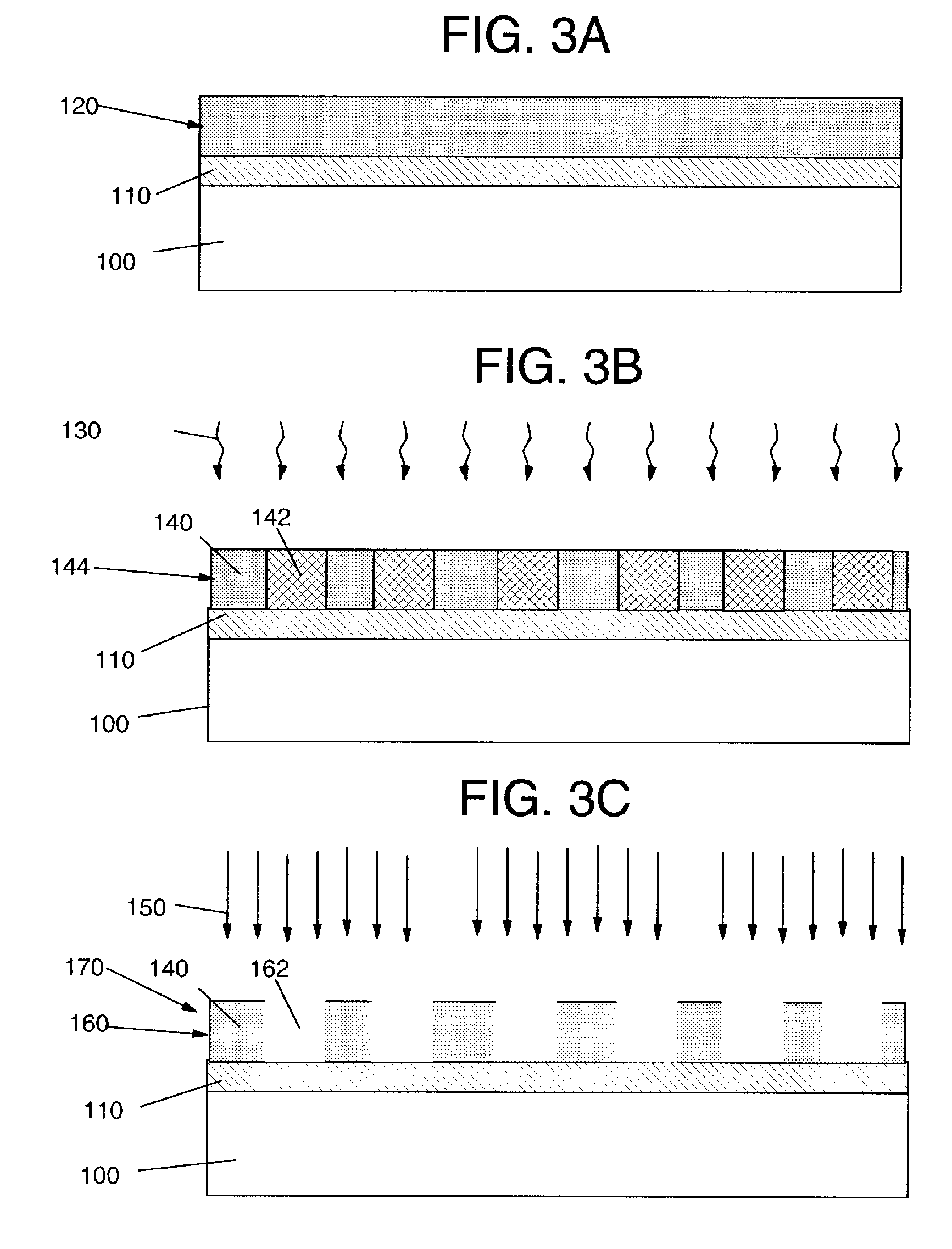DEVELOPMENT OR REMOVAL OF BLOCK COPOLYMER OR PMMA-b-S-BASED RESIST USING POLAR SUPERCRITICAL SOLVENT
a technology of supercritical solvent and block copolymer, which is applied in the direction of photomechanical treatment originals, instruments, photomechanical equipment, etc., can solve the problems of PMma-b-s-based resist plasma stripping and other problems, to achieve the effect of removing the unexposed pmma-b-s film, and achieving the effect of reducing the number of ipa, and reducing the cost of ip
- Summary
- Abstract
- Description
- Claims
- Application Information
AI Technical Summary
Problems solved by technology
Method used
Image
Examples
Embodiment Construction
[0024] With reference to the accompanying drawing, FIGS. 3A-C show a method of forming a nano-structure incorporating a method of developing and / or removing a select portion of a block copolymer according to the invention. As used herein, “develop” means formation of patterns, and “remove” means taking out material from a film or other structure.
[0025] As shown in FIG. 3A, a first optional step includes coating a substrate 100 with a random copolymer 110. “Random copolymers” include macromolecules in which the probability of finding a given monomeric unit at a given site in the chain is independent of the nature of the adjacent unit. Random copolymers are called random because the sequence distribution of monomeric units follows is somewhat random, i.e., they do not have an ordered form like diblock copolymer. For example, styrene monomer does not have to repeat with methyl methycrylate, it could be styrene itself. Random copolymer 110 is affixed to a surface of substrate 100 and e...
PUM
 Login to View More
Login to View More Abstract
Description
Claims
Application Information
 Login to View More
Login to View More - R&D
- Intellectual Property
- Life Sciences
- Materials
- Tech Scout
- Unparalleled Data Quality
- Higher Quality Content
- 60% Fewer Hallucinations
Browse by: Latest US Patents, China's latest patents, Technical Efficacy Thesaurus, Application Domain, Technology Topic, Popular Technical Reports.
© 2025 PatSnap. All rights reserved.Legal|Privacy policy|Modern Slavery Act Transparency Statement|Sitemap|About US| Contact US: help@patsnap.com



